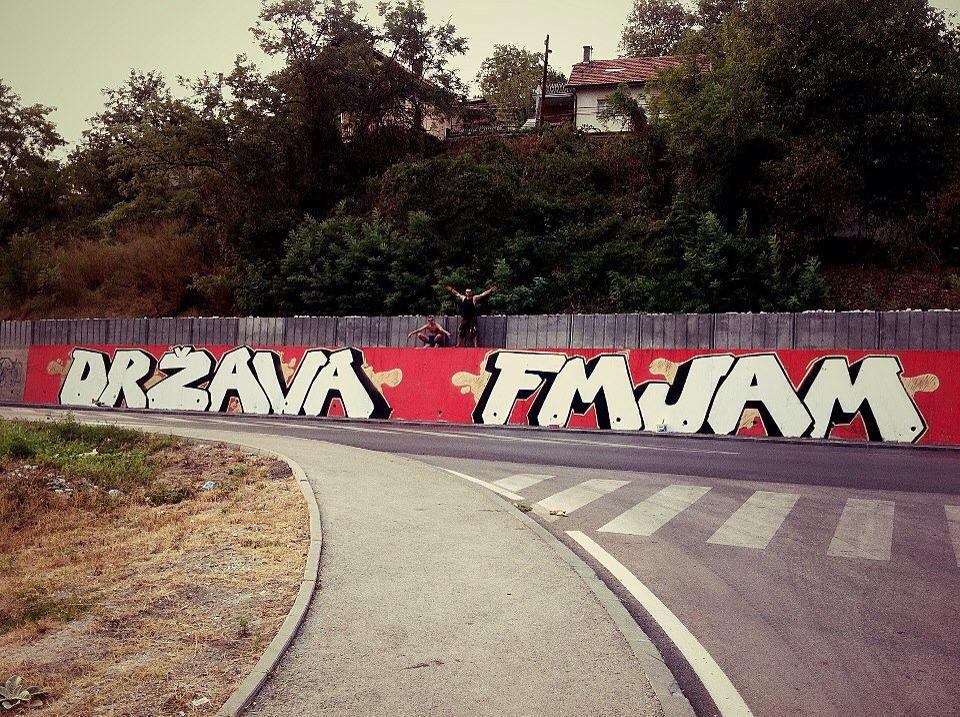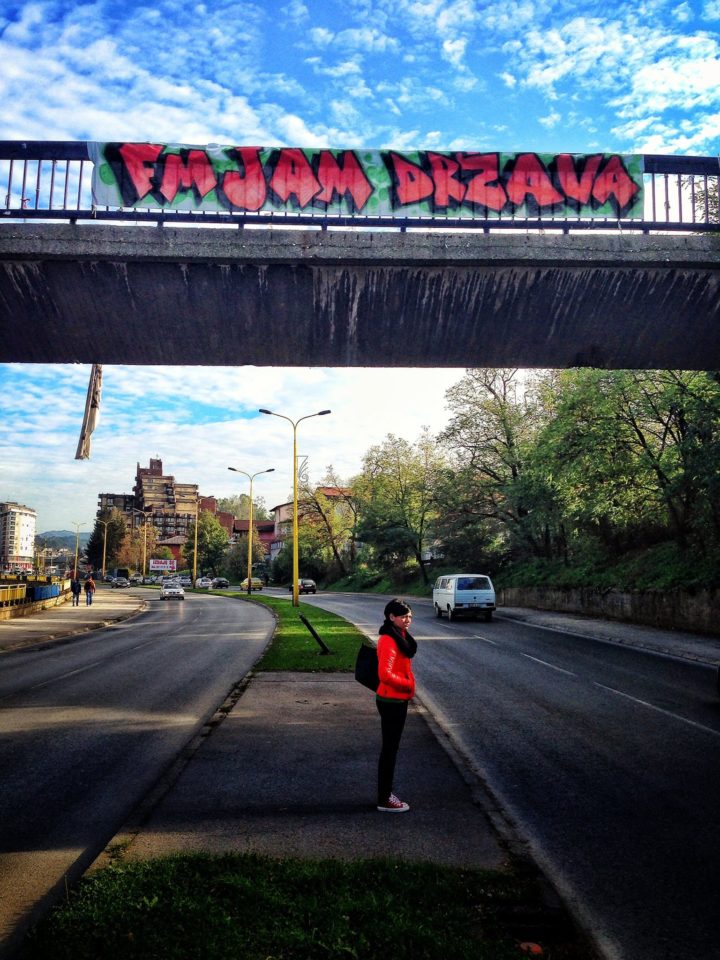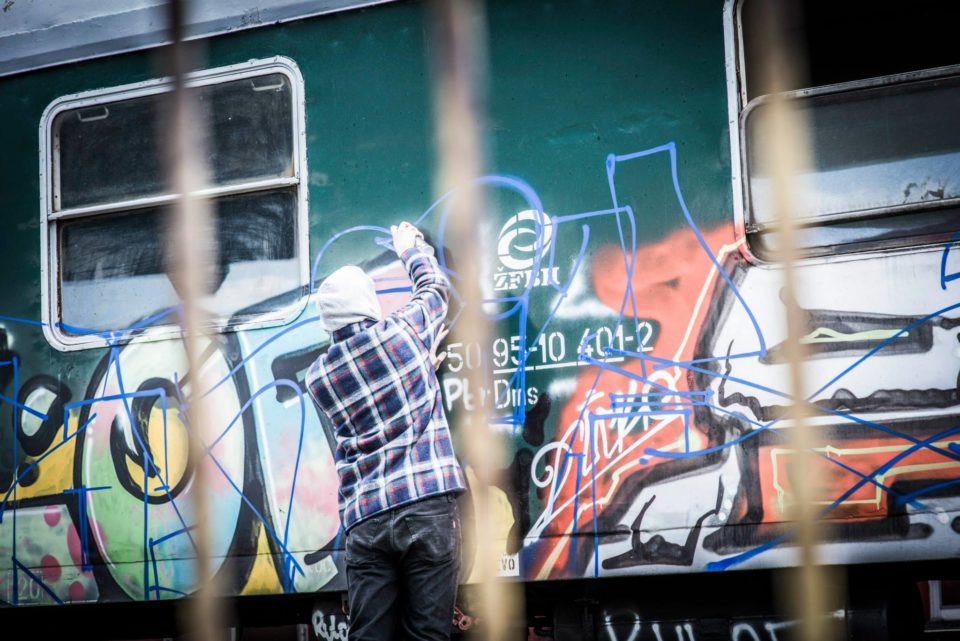
The musical authenticity of hip-hop, as a cultural movement, took Bosnia and Herzegovina (BiH) by storm with its dizzying rise in 2010.
Today, however, this music scene is relatively stagnant. Local hip-hop artists attribute this to the dominance of Balkan “turbofolk” music, the lack of a hip-hop community, and the disinterest of older generations of musicians in new projects. Yet, given that hip-hop is characterized by unstoppable energy, this genre is expected to rise again on the music scene.
Hip-hop has long been distinguished by its unique social dimension, which was a main driver of this culture among the mainly African-American and Latin American communities in which it originated. Since its inception, hip-hop culture has grown from a street phenomenon to a way of life. With its definitive entry into the global mainstream in the 1990s, it soon achieved greater popularity than rock n’ roll. Internationally, August 11, 1973, is recognized as the “birthday” of hip-hop, when Clive Campbell (Dj Kool Herc) performed for attendees at his sister’s party. The 1980s saw the spread of hip-hop beyond the United States, particularly to Europe, where the first groups began to form in France, Germany, and the United Kingdom. Shortly thereafter, American rappers began appearing as regular guests on hip-hop programs throughout Europe.
Hip-hop culture also took root in the Balkans, where this social dimension found special means of expression. Bosnian hip-hop artists have found meaning in this culture, emphasizing authenticity as an essential form of progress. They are united by the shared experience of witnessing the evolution of professionalism in hip-hop production in the country, which began with modest studios and expanded to more sophisticated studios and serious recordings.
Hip-Hop Fundamentals and FM-Jam Broadcasts
The first hip-hop tracks to come to BiH went largely unnoticed, only finding their way into the music scene over time. The earliest traces of hip-hop culture in the country were informal recordings, dating back to the early 1990s. The Tuzla group Lobossi, which consisted of MC Fudo and Crni Zvuk, started recording their first singles during the war. Other early pioneers included Gluho Doba from Zenica and “Johnny da Mista,” whose text series Old School Stories highlighted his teenage years and marked the early emergence of hip-hop in Sarajevo.
A turning point came on December 13, 1999, with the launch of the Bosnian Hip-Hop radio program, the first FM-Jam show broadcast on Kameleon Radio, organized by DJ Soul and DJ Erol.
Domestic hip-hop has been on the rise ever since. In the early 2000s, a new generation of MCs, breakers, writers, and beatmakers emerged, making the Bosnian hip-hop scene recognizable. The peak of this movement came with the appearance of Edo Maajka, who’s first three albums kicked off a new era of Balkan musical creativity.

Simultaneously, an underground hip-hop scene had begun to flourish, as musicians started connecting from cities across BiH, including Tuzla, Zenica, Sarajevo, Mostar, Bihać, Brčko, and Banja Luka. This culminated in the Unity Hip-Hop Festival in 2002 in Tuzla, where MCs, DJs, breakdancers, and graffiti artists performed.
Recognized as the first Balkan hip-hop festival, Unity has been held several times over the years, bringing together rappers and artists from not only BiH but also Croatia, Serbia, Slovenia, and other countries.
Zenica: A Home of Bosnian Hip-Hop
Among the groups featured at the Unity Festival was Mučenička Grupa from Zenica. Over the decades, they have had a sizeable impact on the domestic music scene and established themselves as an underground classic of Bosnian and Balkan hip-hop.
“Those were totally different times. Without going into detail, we were very young. As high school students, we started writing and were interested in recording songs. There was already a hip-hop community in Zenica, which was mainly made up of breakdancers and writers, a few rappers in the making. We somehow got in there and very quickly showed that we were talented and had our own style,” recalled Mučenička Grupa member Mersad Muhović, known as Somer.
One of the main problems they faced, Somer explained, was a lack of equipment: “We were kids coming from the working class. We had no money for equipment, no way to get it, and no knowledge of how to use it. There was no YouTube with a billion different tutorials. There was no YouTube at all.”
Reflecting on circumstances then and now, he added: “A Bosnian hip-hop scene exists, of course, but it’s nowhere near what it used to be. We have performers from Sarajevo who record, release music videos and albums, and perform, but the community aspect that once existed is missing.”
Somer also noted the impact of graffiti artists in BiH, whom he considers some of the most talented in Europe.
Mučenička Grupa recently teamed up with Sarajevo-based beatmaker EDBA on a new project, offering a glimpse of its sound in their latest track “Ima Svega.”
Herzegovinian Beats
Another legendary lineup in BiH hip-hop is Sove [The Owls] from Mostar. Like the city itself, this group has made classic contributions to the domestic music scene, introducing Herzegovinian rock to their beats.
Sove’s MC Mayer, a Mostar native, is considered one of the biggest stars ever produced by the Balkan hip-hop scene. His style of story-telling, with lyrics that still manage to surprise even after years of listening, would be difficult for most artists to achieve. For Mayer, however, it seems to come naturally.
Looking back at their beginnings, Mayer said that FM-Jam was instrumental in uniting all those interested in hip-hop culture across BiH.

“The first collaborations were between Sarajevo and Tuzla. This collaboration happened through Erol, the founder of the FM-Jam radio show and web portal, who was studying in Mostar during the period that Sove released their first songs. We met at one of our local performances. He, like many others, provided us with the platform to hear each other through what was then a new media outlet in the region, the web portal fmjam.com, of which I myself became the editor,” explained Mayer.
Hip-hop played a major role in Mayer’s life, giving him the confidence to embrace his true self and acquire skills he uses on a daily basis. It also helped keep him off the streets and connected him with many amazing people he likely wouldn’t have encountered otherwise.
Mayer is proud of having proven to be a quality MC across various instrumental genres, both as a rapper and beatmaker, but also as a producer. He revealed that he is working on new projects to refresh the cultural scene in Mostar and BiH at large.
According to Mayer, hip-hop in BiH today is completely different from what it was more than a decade ago. He said that the older generation of hip-hop artists is generally disinterested in working on new projects, and that the domestic music scene has witnessed a transition from hip-hop to turbofolk.
“One of the greatest strengths of hip-hop is its continuous evolution and adaptation, but turbofolk has prevailed… In terms of music, hip-hop has progressed a lot, but in terms of content, it has regressed a lot, unfortunately,” Mayer pointed out.
From creating music to being in a band
In Banja Luka, the hip-hop scene was refreshed in 2014 when the rap group Grin Bulz published their first song on YouTube. It all started as a result of a collaboration between artists Big Joe and Klasik, who later adopted the name Blues [blu:z] and Green [ɡriːn]. Until 2019, they rapped exclusively on beats.
Discussing their beginnings, they recall that the Banja Luka rap scene was more active and productive in this period due to collaboration and healthy competition. Today, they don’t think too much about the scene, focusing instead on their own work.
Grin Bulz’s musical beginnings were difficult, but these Banja Luka residents say they didn’t see it that way at the time, merely facing the inevitable challenges head-on. Like many from their generation, their main role model was Edo Maajka, whose work inspired them at an early age. Later, they explored the local Banja Luka scene and discovered lesser-known performers, which influenced the authentic sound they have today. Additionally, given the rarity of hip-hop groups, Grin Bulz, with its 7 members, stands out within this traditionally solo-artist-dominated genre.
“From a technical perspective, producing rap in Bosnia and Herzegovina is no longer a challenge; all that’s needed is the talent and persistence to create it. Also, it seems that rap is generally much more accepted in society. Today, at least in some form, almost everyone listens to it, while earlier this was not the case. However, everything still comes down to personal initiative and resourcefulness, which perhaps should remain so. We believe that quality music can find its way even without infrastructure, which in BiH, hardly exists,” says Grin Bulz.
These sentiments have been true throughout the early history of hip-hop culture. Although this music emerged from the impoverished South Bronx neighborhood of New York, in just two decades, it managed to reach the airwaves of almost every radio station in the United States and later, all over the world.






